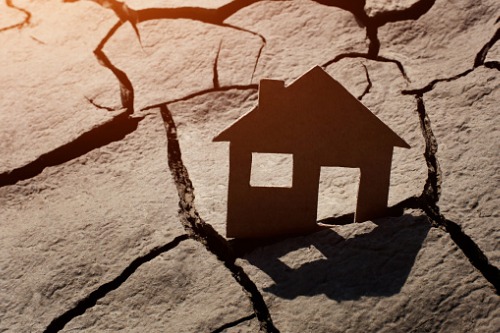

Millions of people across 42 states in America are exposed to earthquakes – and many of them don’t even realize it. Some need more of a seismic shake into reality than others. For example, those living in states like Alaska and California are much more at risk to sudden and rapid quakes caused by the shifting and breaking of rock beneath the earth’s surface than those living in states like Florida and North Dakota. Nonetheless, nearly all - 85% - of states have some exposure to earthquakes, making it a widespread peril that cannot be ignored.
Are earthquakes covered by insurance?
In the US, earthquakes are not covered under standard homeowners’ insurance or business insurance policies, although people often presume they will be. Coverage is available either via endorsements to homeowners or business insurance policies or as a separate standalone policy. Earthquake insurance, in its standalone form, covers property losses resulting from a sudden trembling or shaking of the earth, including incidents caused by volcanic eruption. The coverage does not stretch to losses resulting from fire, explosion, flood or tidal wave following the covered seismic event. Rather, coverage for those resulting damages would be covered under most standard homeowners’ or business insurance policies.
How much does earthquake insurance cost?
Like all insurance, the cost of earthquake coverage varies depending on the location, the insurer, and the type and quality of structure the policy is tied to. An old brick structure in a state of disrepair is going to cost more to insure than a new structure with built-in state-of-the-art quake mitigation. Regions in the US are all graded on a scale of 1 to 5 for likelihood of earthquakes, and this can also have an impact on insurance rates.
To protect insurers against catastrophic earthquake losses, and to help consumers reduce their premium costs, earthquake insurance coverage carries a deductible, typically in a percentage rather than a dollar amount. The Insurance Information Institute explains: “Deductibles can range anywhere from 2% to 20% of the replacement value of the structure. This means that if it cost $100,000 to rebuild a home and there was a 2% deductible, the consumer would be responsible for the first $2,000 dollars. Insurers in states like Washington, Nevada and Utah, with higher than average risk of earthquakes, often set minimum deductibles at around 10%. In most cases, consumers can get higher deductibles to save money on earthquake premiums.”
Who sells earthquake insurance coverage?
Earthquake insurance is sold by most of the top branded private insurance companies in the US. Here’s a list of consumer favorites compiled by ConsumersAdvocate.org:
How many people buy earthquake insurance?
Despite nearly half of all Americans having some exposure to earthquake risk, only around 25-28% of homeowners in earthquake prone areas have earthquake insurance, according to the Western Insurance Information.
Why don’t people buy earthquake insurance?
There are a number of reasons why Americans choose not to buy earthquake insurance. The first is that many believe it’s too expensive in proportion to their understood exposure. Limited coverage is also a deterrent to purchasing the coverage. Thirdly, there’s a general lack of education around what is covered under an earthquake insurance policy and what will happen in the aftermath of an incident. Many people believe the federal government will step in and cover all disaster recovery, when, in fact, such total assistance is not available.
The California Earthquake Authority
The state of California is arguably the most famous for the earthquake peril, despite Alaska suffering great seismic activity. According to a recent US Geological Survey, there’s a 31% chance of Southern California (the Los Angeles area) experiencing a magnitude-7.5 earthquake in the next 30-years. This potentially giant quake has officially gained the title of ‘The Big One’. Its name haunts media throughout the US via terrifying previews of what damage an event of such magnitude could reap.
California has suffered a ‘Big One’ before. In January 1994, the magnitude-6.8 Northridge earthquake caused an estimated $25.6 billion in insured losses. According to the Insurance Information Institute, the insurance industry had to pay out more in claims for the Northridge earthquake than it collected in earthquake premiums over the preceding 30 years. Some insurers came very close to insolvency as a result. After this, many insurance companies began to limit their exposure to earthquakes in the state, while also dramatically increasing their rates and deductibles. Earthquake insurance then became too expensive for the majority of homeowners, and a serious protection gap opened up in the state.
In 1996, Californian lawmakers introduced the California Earthquake Authority (CEA), a publicly managed entity, with the aim of providing basic earthquake insurance coverage to homeowners in the state. It is now the largest provider of earthquake insurance in the US.
